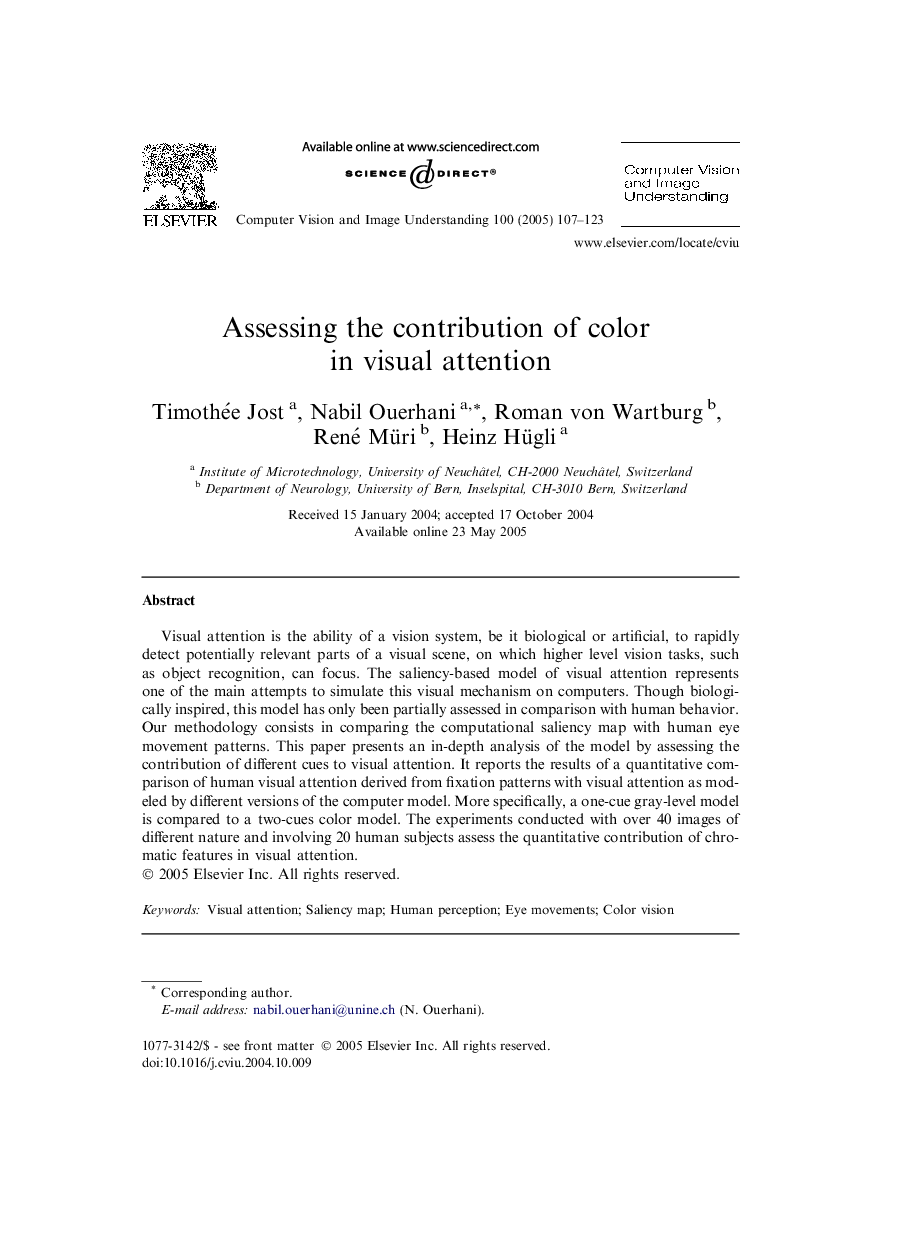| Article ID | Journal | Published Year | Pages | File Type |
|---|---|---|---|---|
| 9669560 | Computer Vision and Image Understanding | 2005 | 17 Pages |
Abstract
Visual attention is the ability of a vision system, be it biological or artificial, to rapidly detect potentially relevant parts of a visual scene, on which higher level vision tasks, such as object recognition, can focus. The saliency-based model of visual attention represents one of the main attempts to simulate this visual mechanism on computers. Though biologically inspired, this model has only been partially assessed in comparison with human behavior. Our methodology consists in comparing the computational saliency map with human eye movement patterns. This paper presents an in-depth analysis of the model by assessing the contribution of different cues to visual attention. It reports the results of a quantitative comparison of human visual attention derived from fixation patterns with visual attention as modeled by different versions of the computer model. More specifically, a one-cue gray-level model is compared to a two-cues color model. The experiments conducted with over 40 images of different nature and involving 20 human subjects assess the quantitative contribution of chromatic features in visual attention.
Related Topics
Physical Sciences and Engineering
Computer Science
Computer Vision and Pattern Recognition
Authors
Timothée Jost, Nabil Ouerhani, Roman von Wartburg, René Müri, Heinz Hügli,
